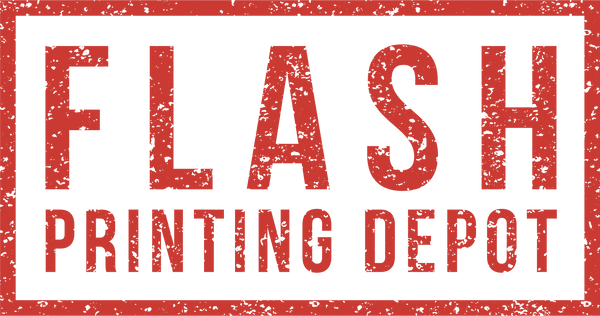
How to Start a Profitable DTF Printing Business in 2025
Share
So, you're thinking about starting your own DTF printing business. That's exciting! The custom apparel industry is booming, and DTF technology has made it easier than ever to produce high-quality, full-color designs without the massive upfront investment required by traditional printing methods.
At Flash Printing Depot, we've helped hundreds of entrepreneurs launch their own successful DTF businesses. We've seen what works and what doesn't, and we're here to share our insights with you. In this guide, we'll walk you through the essential steps to get your DTF business up and running, from choosing the right equipment to finding your first customers.
Step 1: Understand the DTF Business Model
Before you invest in equipment, it's important to understand the different ways you can structure your DTF business. Here are the most common models:
Full Production Shop: You handle everything from design to printing to pressing. This gives you the most control and the highest profit margins, but it also requires the most investment in equipment and time.
Transfer-Only Business: You focus solely on producing DTF transfers and sell them to other businesses who will press them onto garments. This model requires less equipment (no heat press needed) and allows you to serve multiple customers at once.
Hybrid Model: You offer both finished products and wholesale transfers. This gives you flexibility and multiple revenue streams, but it requires more equipment and inventory management.
At Flash Printing Depot, we support all three models. Whether you need a complete setup with our DTF Smart Shakers or you just want to order custom transfers to resell, we've got you covered.
Step 2: Invest in the Right Equipment
Your equipment is the foundation of your business. Here's what you'll need to get started with a full DTF production setup:
| Equipment | Purpose | What to Look For |
|---|---|---|
| DTF Printer | Prints your designs onto the transfer film. | Look for a printer with reliable print heads, good color reproduction, and compatibility with your chosen inks. Popular models include those with Epson i3200 print heads. |
| Powder Shaker & Dryer | Applies adhesive powder to the printed film and cures it. | This is where our DTF Smart Shaker shines. It combines powder application, shaking, and drying into one automated machine with patented safety features. Available in 24", 32", and 63" sizes. |
| Heat Press | Transfers the design from the film onto the garment. | Choose a press with even heat distribution and adjustable pressure. A 16x20" clamshell press is a good starting point. |
| Fume Extractor | Removes harmful fumes and powder particles from your workspace. | Our C300 and C400 Fume Extractors reduce powder exposure by up to 90%, keeping your workspace clean and safe. |
Step 3: Source Quality Consumables
Your consumables—film, powder, and ink—directly impact the quality of your final product. Don't cut corners here. At Flash Printing Depot, we offer premium DTF consumables that are trusted by print shops nationwide:
- Instant Peel DTF Film: Available in 24" and 32" widths, our film is engineered for vibrant color, reliable adhesion, and long-lasting durability.
- OEKO-TEX Certified DTF Powder: Our ultra-fine adhesive powder ensures strong bonding and a soft hand feel.
Step 4: Find Your Niche and Target Market
The custom apparel market is huge, but trying to serve everyone is a recipe for burnout. Instead, focus on a specific niche where you can stand out. Here are some profitable niches to consider:
- Sports Teams: Local youth leagues, high school teams, and recreational sports clubs need custom uniforms and fan gear.
- Corporate Apparel: Businesses need branded shirts for employees, events, and promotional giveaways.
- Events & Celebrations: Weddings, family reunions, birthday parties, and other special events are great opportunities for custom apparel.
- Online Stores: Sell your designs through platforms like Etsy, Shopify, or Amazon Merch.
Step 5: Price Your Products for Profit
Pricing is one of the most challenging aspects of running a DTF business. You need to cover your costs, pay yourself, and remain competitive. Here's a simple formula to get started:
Total Cost = Material Cost + Labor Cost + Overhead
Selling Price = Total Cost × Markup (typically 2-3x)
For example, if a custom t-shirt costs you $5 in materials and labor, you might sell it for $15-$20 retail. For wholesale transfers, your margins will be lower, but you'll make it up in volume.
Step 6: Market Your Business
Once you're set up, it's time to get the word out. Here are some effective marketing strategies:
- Social Media: Share photos and videos of your work on Instagram, Facebook, and TikTok. Behind-the-scenes content and customer testimonials are especially effective.
- Local Networking: Attend local business events, join your chamber of commerce, and build relationships with potential customers.
- Online Presence: Create a simple website or online store where customers can place orders. Platforms like Shopify and Wix make this easy.
- YouTube: Share your knowledge and build an audience. We've grown our own channel, Straight Outta Content, to over 38,000 subscribers by sharing our expertise and passion for DTF.
Step 7: Join the Flash Printing Depot Dealer Program
If you're serious about scaling your business, consider joining our Dealer Program. As a dealer, you'll get access to exclusive wholesale pricing, priority support, and the opportunity to resell our industry-leading equipment and consumables.
Final Thoughts
Starting a DTF printing business is an exciting and rewarding venture. With the right equipment, quality consumables, and a solid business plan, you can build a profitable operation that serves your community and grows with you. At Flash Printing Depot, we're here to support you every step of the way.
Ready to get started? Explore our full range of DTF equipment and consumables, and don't forget to subscribe to Straight Outta Content for more tips, tutorials, and inspiration.
